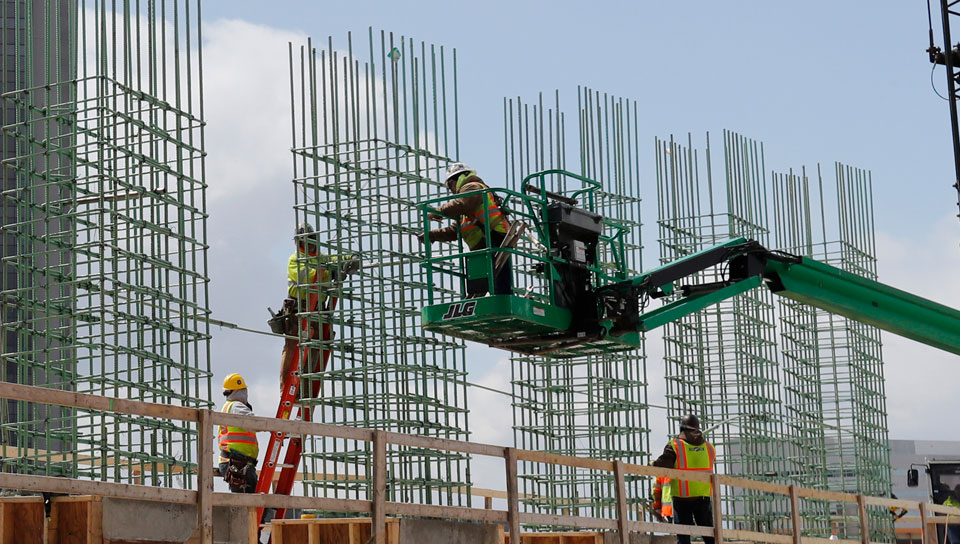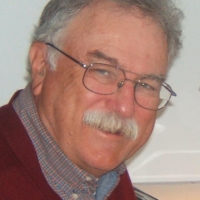
Pending legislation to establish a $4 trillion National Infrastructure Bank would rebuild the nation’s rusting bridges, roads, and power grid and create 25 million union jobs desperately needed as the nation sinks into the worst economic crisis since the Great Depression. That was the message from building trades union leaders, economists, and community activists, speaking at a Zoom webinar during the virtual Democratic National Convention (DNC), Wednesday.
Rep. Danny Davis, D-Ill., author of H.R. 6422, the National Infrastructure Bank Act, greeted the crowd that signed on to the webinar.
The online meeting was hosted by Jack Hanna, a DNC delegate and former chair of the Democratic Party of Pennsylvania. Hanna is also chair of the Coalition for a National Infrastructure Bank based in Leesburg, Va. He hailed the racial diversity and the wide geographical reach of the participants—African American, Latino, and white, young and retired, from New York to California, Washington state to Virginia.
Tara Zrinski, a county councilwoman from Northampton, Penn., said transportation projects in her part of the Keystone State are $1 billion short of the funds needed, money that could be borrowed from a national infrastructure bank. H.R. 6422, she added, “addresses climate change and the transition to a green economy. That is exciting and that is why I am a supporter of H.R. 6422. We need to educate people as much as we can, unions especially, because this is going to create so many union jobs.”
Steven Fenberg, a historian who has written extensively about the Great Depression and government measures to counter it, cited the Reconstruction Finance Corporation (RFC) signed into law by President Herbert Hoover and greatly expanded by President Franklin Delano Roosevelt. The RFC, Works Progress Administration, Civilian Conservation Corps, Rural Electrification, and other measures dramatically expanded the nation’s infrastructure while creating millions of jobs, Fenberg said. He stressed that unlike WPA and the CCC, the National Infrastructure Bank—like the RFC—would be a lending institution with every dollar lent repaid with interest. It would be initially capitalized with $500 billion by the U.S. government.
Thomas Carey, president of the Westchester-Putnam (N.Y.) Central Labor Council, said roads, bridges, water and sewer mains are crumbling and rotting. “They still have wooden pipes running under New York,” he said. “Imagine that, 200-year-old wooden pipes running under the biggest city in the country.” They have sometimes ruptured, flooding downtown Manhattan.
H.R. 6422, he added, “is the biggest job creator we have seen in a long, long time. It is especially important with COVID-19. We need these jobs.” Erika White, a young African-American community organizer from Toledo, Ohio, said, “The Midwest has been hit hard. Our jobs went overseas. In places like Toledo, the rustbelt, this bill will make all the difference, not only the direct jobs it creates” but indirect jobs as well.
“This is a grassroots movement,” she continued. “Talk to your congress members, get them to endorse. If we can spend for a ‘Space Force’ to send a few men to the moon, we can spend to rebuild our infrastructure. If we can invest in corporations and banks, we can invest just as much in jobs for American workers.”
Perhaps remembering Flint, Mich., Stanley Forcsek, a retired Amtrak executive, cited the lead pipes that carry drinking water. “I don’t want to come home and find my grandchildren suffering from lead poisoning,” he said.
He scorned “naysayers and critics” who complain of the cost of repairing infrastructure but never consider the “betterment of our country,” adding, “Our rail transportation is 200-years-old. We need to rebuild rail quickly, move people off the highway into commuter trains, eliminate traffic gridlock.”
David Cameron, a leader of the Locomotive Engineers in California, chimed in. “We are very supportive of rebuilding rail passenger service in the United States.” He pointed out that the Acela high speed train transports passengers in three hours from Washington D.C. to New York City, competing with air passenger service. High-speed rail projects between Houston and Dallas and San Francisco and Los Angeles are moving forward. “It takes a lot of resources, money, and political will to get it done.”
Jason Parker, an AFL-CIO Building Trades leader in Virginia, said the massive job loss from shutting down mills and factories across the nation is the main reason for the decline of union jobs and erosion of the strength of the labor movement. “We can’t get manufacturing back until we restore the infrastructure,” he said.
Much of the discussion focused on the crisis in rural communities. Rudy Arredondo, founder of the National Latino Farmers and Ranchers Trade Association, said, “I’m a big fan of this infrastructure bank bill” because of the sharp decline in the rural infrastructure. “Most farm business must be done on the internet, and farmers lack access. It is an oversight that has not been addressed.”
Climate change has drastically decreased the amount of water for drought-stricken farmers in the southwest, he said. “Tribal communities have a very difficult time. They are certainly in need of sustainable development. Native American communities would be able to obtain loans to provide housing, health care, and agriculture to sustain those communities, to get water.”
Jack Hanna interjected, “Twenty percent of rural hospitals have closed in the middle of a pandemic.” China, he said, invests 8.5% of GNP in infrastructure, the European Union nearly 5%. The United States invests a pathetic 4 percent.
Alphecca Muttardy, a former U.S. representative to the International Monetary Fund, said the motto embraced by delegates at the DNC is “Build Back Better.” After COVID-19, she said, workers and students must go back to a nation with dramatic changes for the better, like universal health care. “This infrastructure bank idea fits that well,” she said.
President George Washington and Treasury Secretary Alexander Hamilton created the first national bank aimed at building the infrastructure. It included the U.S. Post Office, to facilitate economic growth and bind the 13 colonies into one nation. The Society of American Civil Engineers, she said, estimates that it would cost $4 trillion to restore, rebuild, and expand the physical infrastructure “especially in this age of COVID-19.”
She cited the housing crisis. A mayor could come in with a plan to build affordable housing, she said. The National Infrastructure Bank would approve loans to finance the project to be paid back at low interest rates. Taken in total, the $4 trillion in shovel-ready and long-term projects “would take at least 25 million workers to do this work. Davis-Bacon wages would be paid,” she said.
Economic growth in the past 20 years, she continued “has been sluggish,” with most of the increased wealth flowing into the pockets of the wealthy. “We have 30 million unemployed and many of those jobs will never return This would be a real boost to the economy.”












Comments